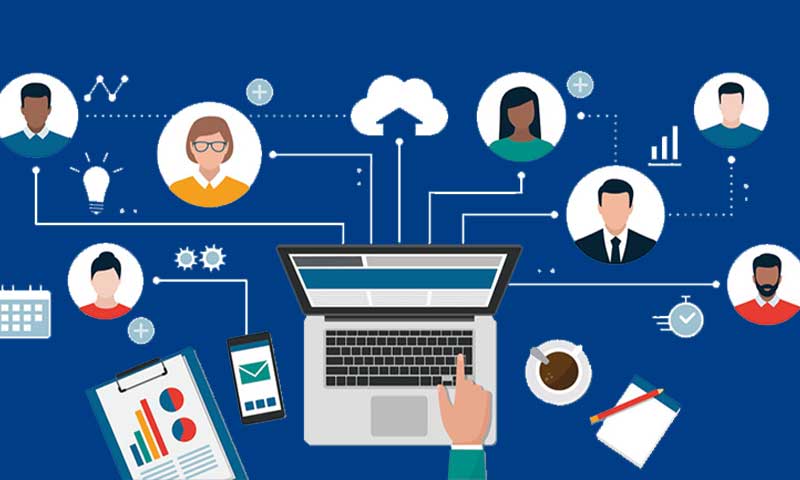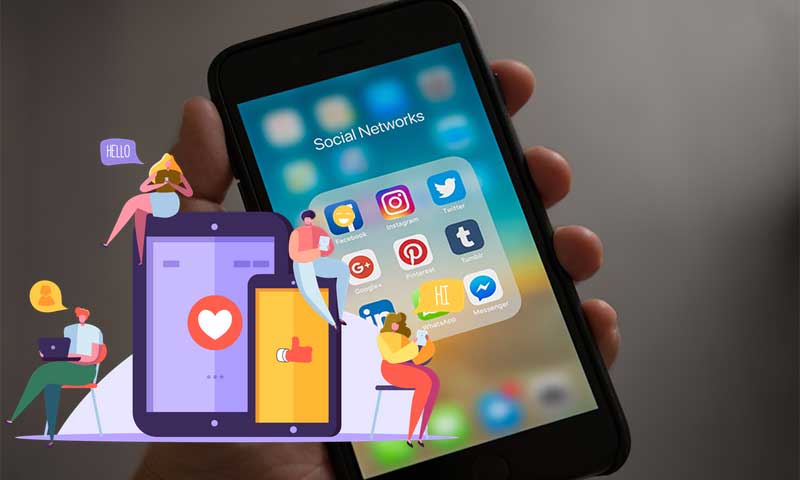Digital school: visions of future education
Our schools are also feeling the digitalization education trend and are reacting slowly. Populated by those who naturally grow into this “new” digitized world, the trend that otherwise has to be absorbed seems to be running in the fine sand of tradition here, of all places. The natural way of using the cell phone in the schoolyard collides almost paradoxically with the picture of the teacher in front of a green board, equipped with chalk, pointing stick, and class book.
In a nutshell, the media described the current education market as “Digital’s next frontier” in an essay. For instance, many institutions offer an online or remote course for grooming, such as MMI online course by MedicMind. A look at the everyday learning of students in the 21st century raises one question above all: What benefits can digitization deliver in the area of learning and teaching today and in the future?
Remote Education & The Internet
One of the main catalysts in the course of this development is the Internet. As a universal medium for learning both in class and at home, it will firmly establish itself in the coming years. Even more: it provides the potential, despite shrinking education budgets, the dream of individual support for a broad socio-demographic. To make it possible for the population to take the pressure off teachers and at the same time to achieve top academic and school performance, while everyday school life becomes more understandable for the parents.
This results in a thesis that can be discussed, which is to be pursued in this article by considering two previously relatively independent constructs: the morning educational market and the afternoon educational market.
The Morning Market: State-Regulated B-To-B Market With Great Potential
In the morning market, the focus is on teaching in class and all related methods and materials. The teaching methods in American schools, for example, have largely changed over the past few years: group work, presentations, independent research tasks, and other focal points appear comparatively often in the curriculum, which promotes the development of a self-confident student personality.
However, the use of new media in teaching has remained almost unchanged. Books and – for a few years now to a manageable extent – digital whiteboards are still the popular tools alongside the classic blackboard and black and white copies. A few years ago, the American teachers, Aaron Sams and Jonathan Bergmann provided new impulses for changing classical teaching with the development of the so-called “flipped classroom” method: The principle of conventional teaching is simply “reversed”. Pupils prepare independently at home for the subject areas dealt with in class, for example by watching corresponding online learning videos and in this way acquiring the material. The actual lesson is used for working together, solving problems, and discussing.
Teachers as A Sole Role Knowledge Distributor
In this way, the teacher does not remain in the role of the sole central mediator of knowledge, but becomes the student’s individual learning partner as a moderator and mediator of the learning process. This learning method thus offers both teachers and students advantages, as it makes the teacher’s work easier and, through the individual supervision of the student, leads to more effective teaching.
It doesn’t take a lot of effort to imagine how the popularity of the math teacher among digital natives skyrockets as soon as instead of the lonely, monotonous calculation of tasks from the math book, the independent derivation of the solutions with the help of motivating online videos as Giving up homework.
This is not least due to the clear advantages that the medium of “video” brings with it: Moving images can often visualize complex issues in a tangible and understandable way and at the same time be actively integrated into learning projects or tests.
Deliver Education – The Course Content
The course content can be conveyed in many ways, gain in attractiveness through interactive elements and also increase the students’ media skills and the ability to work independently. Networking enables project-oriented and targeted collaboration-oriented lessons to be implemented that would not previously have been possible in this form.
In essence, the flipped classroom model stands in the way of classic frontal teaching and at the same time paves the way for a digitized morning market that increasingly manages without heavy books and paperwork.
Afternoon Market as An Introduction To Digital Education
Creative teaching far removed from analog, outdated teaching methods is essential today in a reality in which the Internet is an integral part of everyday life for students and the senses are connected to digital content at an early stage. In contrast to the morning market, this digital revolution in education has already shaken up the afternoon market.
With more than two million US students taking private tutoring, this market has been booming for years. Parents spend over 1.5 billion dollars a year on additional lessons for their children, which is reflected particularly dynamically in the less regulated afternoon market thanks to quick decision-making processes. The providers of digital teaching and learning offers are faced with a fundamentally more open and flexible market situation and at the same time are meeting with lively interest from private households with their comparatively inexpensive offers.
With online products, pricing models can be developed that satisfy the central need of customers for better grades and are so cheap that they are completely new buyer groups and classes are tapped. The often criticized inequality of opportunity in the US, which is noticeable in families with low incomes who cannot benefit from the advantages of the sometimes very expensive tutoring, can thus be counteracted. The afternoon market will therefore become a springboard for digitized education. Due to the demanding user groups, which are already digitally polarized, as well as the increasing competition, innovative concepts and trends are emerging here. One development that is already emerging is the end of the long prevailing principle that the quality of tutoring automatically decreases with decreasing price and is generally only good, which also costs a lot.
Similar to the eBook, the use of digital communication channels can save the costs of various resources without this having a quality-reducing effect. While there are no costs for paper, printing, book binding and sales with the eBook, online tutoring offers, depending on the concept, benefit above all from being able to forego travel journeys and costs and allow the customer a flexible, self-determined learning rhythm.
Videos For E-Learning
It is even more profitable to set up the tutoring on the basis of meaningful learning videos that are always available online. Salman Khan, a former hedge fund analyst and founder of the Khan Academy, is considered the best known internationally Representative of this tutoring concept via online learning video. So far it has reached more than 50 million users worldwide.
Share















